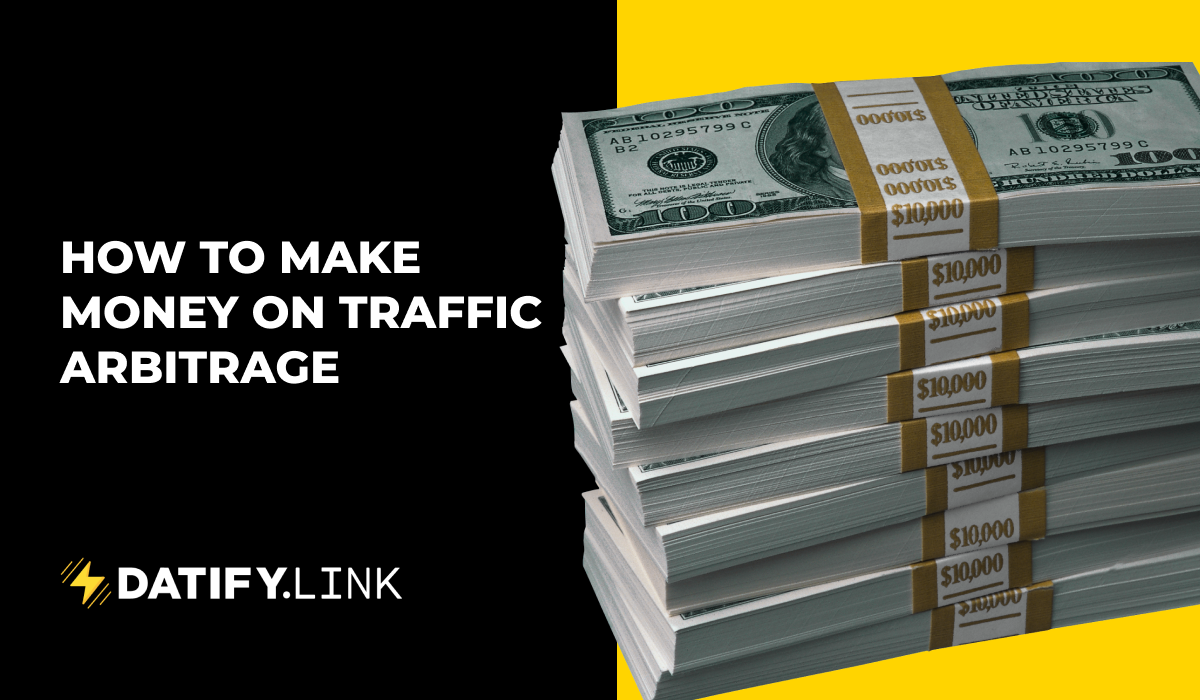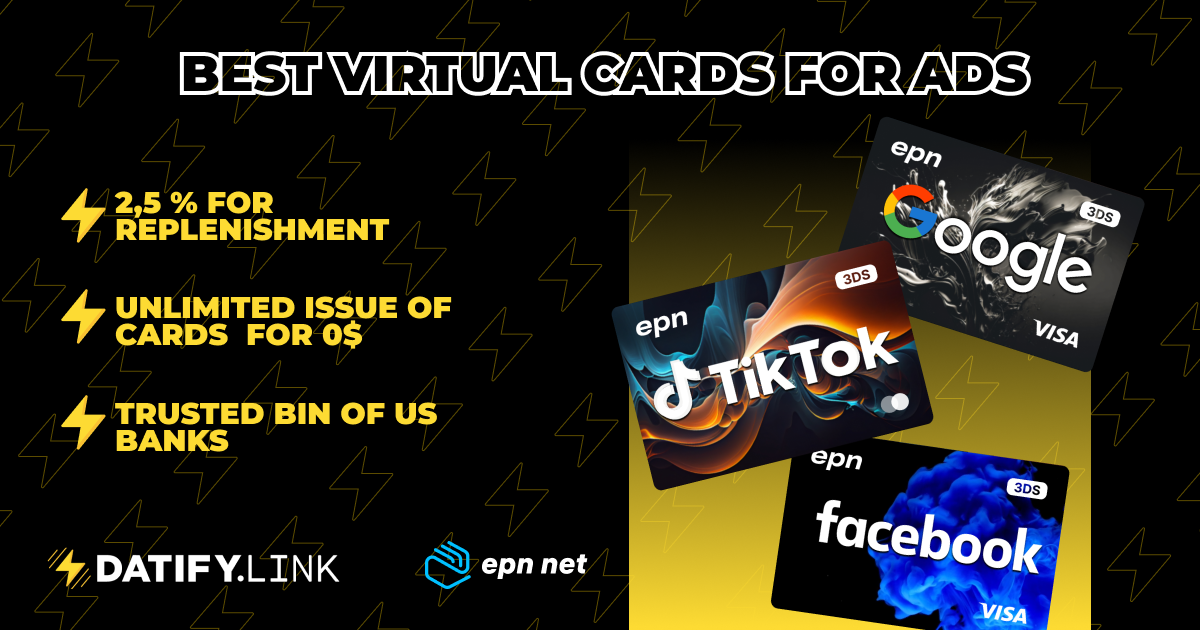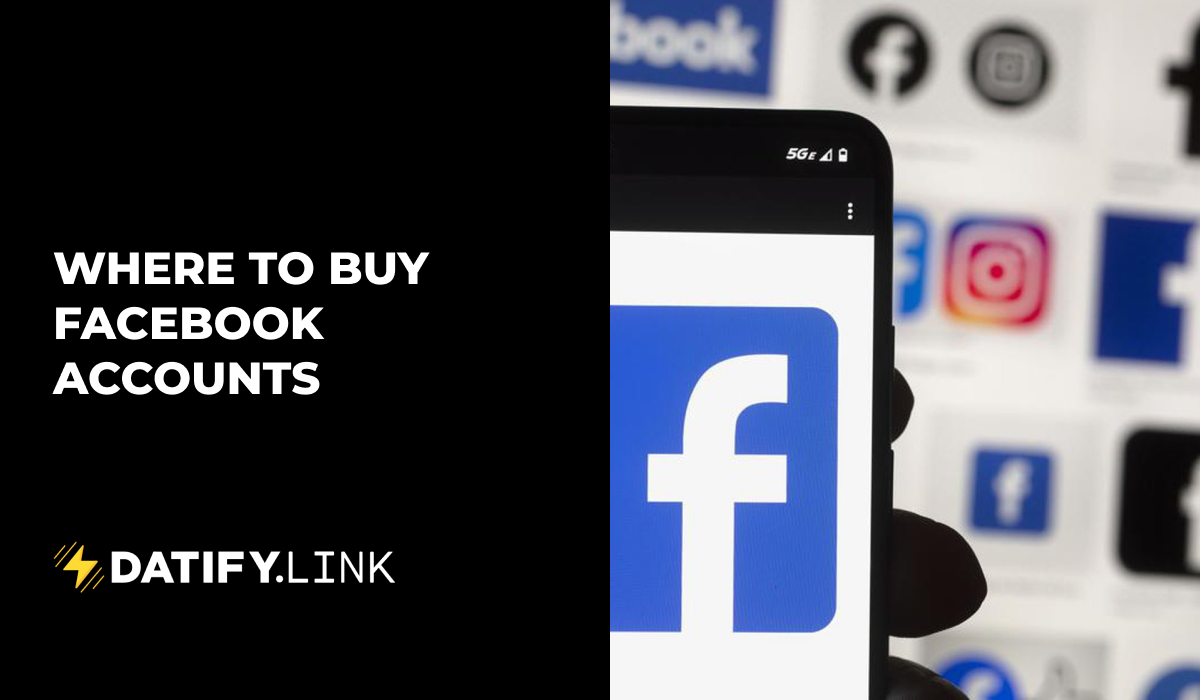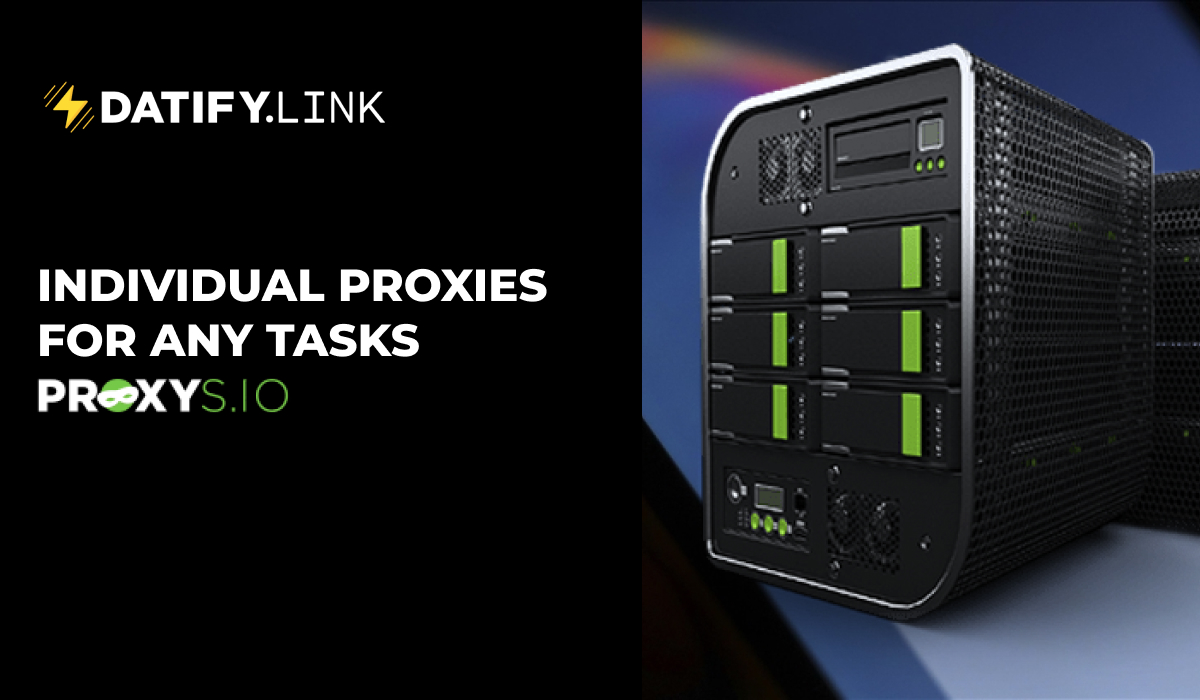Traffic arbitrage is becoming an increasingly popular and profitable way of making money on the Internet. This approach involves buying traffic at a low price and selling it at a higher price, which allows you to earn from the difference in cost. In this article, we will cover the main aspects of traffic arbitrage, starting with understanding the market and competition, determining the target audience, choosing traffic sources, creating and optimizing a landing page, monetizing traffic, and evaluating results. Recommendations on business scaling and training in this area will also be presented.
Definition of traffic arbitration
Let’s start by defining what affiliate marketing traffic is.
- Traffic in affiliate marketing is the flow of users who visit websites, applications, or other Internet resources for the purpose of performing certain actions, such as buying a product, viewing ads, or registering on a website. In the context of arbitrage, traffic plays a major role, since it is it that provides income for webmasters (site owners), media buyers and affiliates.
The quality of traffic is important for the successful operation of an affiliate program since conversion and long-term profit depend on the quality of traffic. Affiliate marketing distinguishes between organic traffic (visitors who came to the site through searches in search engines) and paid traffic (visitors received through advertising campaigns or other paid sources).
- Traffic arbitrage is the process of buying and selling internet traffic for profit. The basis of such earnings is the use of different traffic sources that redirect users to sites where they can perform targeted actions. Thus, how to make money on traffic arbitrage becomes a pressing issue for those who are looking for new sources of income.
Why traffic arbitrage can be a profitable business
Traffic arbitrage can become a profitable business, as it allows you to earn income with minimal investment. To start working in this area does not require large start-up capital, which makes it accessible to a wide range of entrepreneurs. In addition, many experts already know how to make money on traffic arbitrage without investments and are ready to share knowledge, tools and services that allow you to optimize the process and reduce costs.
Understanding the market and competition
- Market analysis
To successfully make money on traffic arbitrage, you need to understand the current state of the market, its trends and opportunities. Market analysis should include studying the main sources of traffic, popular niches and in-demand products, as well as identifying promising areas for further development.
- Competition research
Competition in the traffic arbitrage market can be high, so it is important to study the activities of competitors in order to understand how other participants make money on traffic arbitrage. Competition research will allow you to identify the strengths and weaknesses of competitors, evaluate their strategies and choose the most effective methods for attracting traffic.
Definition of the target audience
- Characteristics of the target audience
Determining the target audience is a key step in the arbitration process. A target audience is a group of potential customers who need to be attracted to the site to perform targeted actions. The characteristics of the target audience may include age, gender, geographic location, interests, and other parameters that will help identify and attract the most relevant users.
- Tools for determining the target audience
To determine the target audience, there are many tools that will help collect the necessary information about potential customers. Such tools may include analytics systems, user surveys, social networks and other services that provide statistical data on user activity. The use of these tools will increase the efficiency of earnings on traffic arbitrage and increase income.
Selecting traffic sources
Types of traffic sources
To successfully make money on traffic arbitration from scratch, you need to decide on the traffic sources that will be used to attract users. Among the main types of traffic sources are the following:
| Traffic source type | Description |
|---|---|
| Contextual advertising | Contextual advertising is the placement of advertisements on the pages of search engines (for example, Google Ads, Baidu) or on partner sites. These ads are displayed based on keywords related to user queries or page content. Contextual advertising provides a high target audience and can be configured for maximum efficiency. |
| Targeted social media advertising | Targeted advertising on social networks (e.g. Facebook, Instagram) allows you to place advertisements for specific groups of users based on their demographics, interests and behavior. This ensures high conversion and flexibility in setting up advertising campaigns. |
| Teaser advertising | Teaser ads are small ad units containing an image and short text placed on various sites to attract users. Teasers usually evoke an emotional response from visitors and encourage them to go to the advertised site. |
| Search Engine Optimization (SEO) | Search Engine Optimization (SEO) is a set of activities aimed at increasing the visibility of a website in search engines and increasing organic traffic. SEO includes content optimization, technical aspects of the site, and promotion of external links. |
| Affiliate programs and other types of cooperation with resources | Affiliate programs and cooperation with resources involve the placement of advertising materials, links or other elements on partner sites in order to attract users. Interaction with partners can be carried out on various conditions, for example, pay-per-click, action, or impressions. |
How to evaluate and select the most suitable source
The choice of optimal traffic sources depends on the target audience, budget, and specific arbitration tasks. The answer to the question of how much you can earn on traffic arbitration is largely determined by the right approach to choosing sources. It is necessary to assess the potential of each source in terms of attracting target users, cost of acquisition and scalability. It is also worth considering whether it is possible to make money on traffic arbitration from a single source, or should a combination of different channels be used.
Landing page creation and optimization
What is landing and pre-landing
A landing page is a web page designed to convert visitors into leads, subscribers or buyers. In traffic arbitrage, landing pages are used to promote products or services provided by affiliate programs. Creating a quality landing page is one of the key aspects of successful arbitrage for beginners and experienced arbitrageurs.
Landing pages can be of different types, depending on the goals of the marketing campaign. For example:
- Selling a product or service
- Register for a webinar or event
- Newsletter subscription
- Downloading an app, book, or other material
A landing page should be attractive and compelling so that visitors take the desired action (conversion). For this, various marketing and design techniques are used, such as:
- Bright and high-quality images
- Exciting and benefits of a product or service
- Reviews and recommendations
- Limited offer or discount
- A simple and understandable form for collecting contact information
A pre-landing page is a web page that precedes a landing page (landing page) in a sales funnel. Its main task is to prepare the visitor to perform the targeted action on the landing page. Pre-landers are often used in traffic arbitrage to increase conversions and improve the quality of traffic.
Prelanders can come in a variety of formats, including:
- Articles or reviews
- Cases or success stories
- Quizzes or Polls
- Videos or presentations
- Interactive elements (calculators, sliders, etc.)
Pre-landers help visitors learn more about a product or service before moving to the landing page, which in turn increases the likelihood of taking targeted action. They also allow you to segment your traffic and deliver more relevant offers to different audiences.
How to create an effective and converting landing page
To create an effective landing page, you need to consider the following recommendations:
- determine the purpose of the landing and the corresponding call to action (call to action);
- develop an attractive and informative design;
- create a selling text that will motivate the user to take action;
- ensure fast page loading and adaptability for different devices;
- provide for the possibility of collecting contact information about visitors and analytics to measure results.
Landing page optimization
Landing page optimization is the process of improving its characteristics to increase conversion and traffic arbitrage efficiency. It is important to regularly analyze the results of the landing, conduct A / B testing and make adjustments to the design, texts or page structure. This allows you to answer the question of where you can earn on traffic arbitration with the greatest efficiency and increase income from arbitration.
Traffic monetization
In order to understand where to start arbitrage, you need to decide on the traffic monetization model. At the heart of this process is the choice of a suitable way to generate income from attracted users. There are several main monetization models:
| Monetization model | Description | Examples of using |
|---|---|---|
| CPA (Cost Per Action) | Payment for performing a certain action (purchase of goods, registration, subscription) from the user. | 1. Online stores that pay affiliates a commission for each purchase made.
2. Food delivery services that pay partners for each new order. 3. Dating sites that pay affiliates or webmasters to sign up new users. |
| CPL (Cost Per Lead) | Payment for obtaining contact information of a potential client (lead). | 1. Financial institutions that pay partners to collect contact information of potential customers.
2. Schools that pay webmasters to collect contact information from potential students. 3. B2B companies paying affiliates to get contact details of potential customers. |
| CPC (Cost Per Click) | Pay-per-user clicks on an ad. | 1. Contextual advertising in search engines such as Google Ads or Yandex.Direct.
2. Advertising on social media such as Facebook Ads or VKontakte. 3. Advertising platforms that pay media buyers for clicks on banners or text links. |
| CPI (Cost Per Install) | Payment for installing the application on the user’s mobile device. | 1. Mobile app developers pay affiliates for every install of their app.
2. Mobile games that pay partners for installing and activating a game application. 3. Music or video streaming services that pay affiliates to install their apps. |
| RevShare (Revenue Share) | The division of profits between partners, usually as a percentage of the sale of a product or service. | 1. Affiliate programs of web hosting companies that pay affiliates a percentage of the sale of hosting packages.
2. Online casinos that pay partners a percentage of the profits received from attracted players. 3. E-commerce platforms that pay affiliates a percentage of the sale of goods or services. |
Choosing the most appropriate traffic monetization model
The choice of a monetization model depends on the specific tasks and capabilities of an arbitrator. The solution of this issue is important for the further course of traffic arbitrage and affects income. It is necessary to take into account the specifics of the market, the preferences of the target audience and your own competencies.
Evaluation of the results of advertising campaigns and scaling
After traffic arbitration is launched, it is important to evaluate the results. This will allow you to understand how effective the chosen approach is and will allow you to identify opportunities for further development. Evaluation of arbitration results includes the analysis of indicators such as:
The main metrics for evaluating the results of advertising campaigns include the following indicators:
- CTR (Click-Through Rate) – the ratio of the number of clicks on an ad to the number of ad impressions. Reflects the effectiveness of advertising material and its attractiveness to the audience.
- CPC (Cost Per Click) is the cost per click on an ad. Allows you to estimate the cost of attracting one visitor and control the advertising budget.
- CPM (Cost Per Mille) is the cost per thousand impressions of an ad. Used to estimate the cost of large-scale advertising campaigns with an audience reach focus.
- CPL (Cost Per Lead) – the cost of one lead (potential client). Shows the cost of attracting one lead and allows you to evaluate the effectiveness of an advertising campaign in terms of lead generation.
- CPA (Cost Per Action) is the cost of one targeted action performed by a visitor (purchase, registration, subscription). Allows you to estimate the costs of achieving specific business goals.
- ROI (Return on Investment) is the ratio of the profit received from an advertising campaign to the cost of running the campaign. It is a key indicator for evaluating the profitability and effectiveness of advertising campaigns.
- CR (Conversion Rate) – the ratio of the number of completed target actions to the number of visitors who came from the advertising campaign. Reflects the effectiveness of the sales funnel and the ability of an advertising campaign to convert visitors into customers.
- ARPU (Average Revenue Per User) is the average revenue from one user attracted by an advertising campaign. Allows you to evaluate the potential value of each new client and determine the optimal cost of attracting.
- LTV (Lifetime Value) is the projected revenue from one client for the entire period of interaction with him. Used to determine the long-term profitability of advertising campaigns and plan budgets.
If the arbitration results are satisfactory, you can start scaling the business. This includes expanding the current approach, introducing new traffic sources, as well as optimizing all aspects of work. Traffic arbitrage training and traffic arbitrage training from scratch can help you learn new methods and tools to scale your business.
Conclusion
Traffic arbitrage is a promising and profitable business for those who are ready to study the market, analyze the results and optimize their actions. It is important to choose the right traffic sources, target audience, monetization models and scale based on the results.
At the moment, the lessons of traffic arbitrage and the successful application of the acquired knowledge in practice can lead to significant results in the monetization of Internet traffic. A traffic arbitrage school can be a great start for a successful career, the main thing is to take the choice of an educational institution or courses seriously.
Carefully study the programs offered, teaching methods and the experience of teachers to be sure of the quality of the knowledge you receive. Pay attention to the reviews of students and successful graduates in order to evaluate the real effectiveness of the proposed traffic arbitrage lessons.
In addition to learning, do not forget about the practical application of the acquired knowledge and skills. Experiment with different monetization models, test advertising campaigns and optimize them based on the analysis of key metrics. Thus, you will be able to apply the lessons of traffic arbitrage in practice and achieve success in this area.






